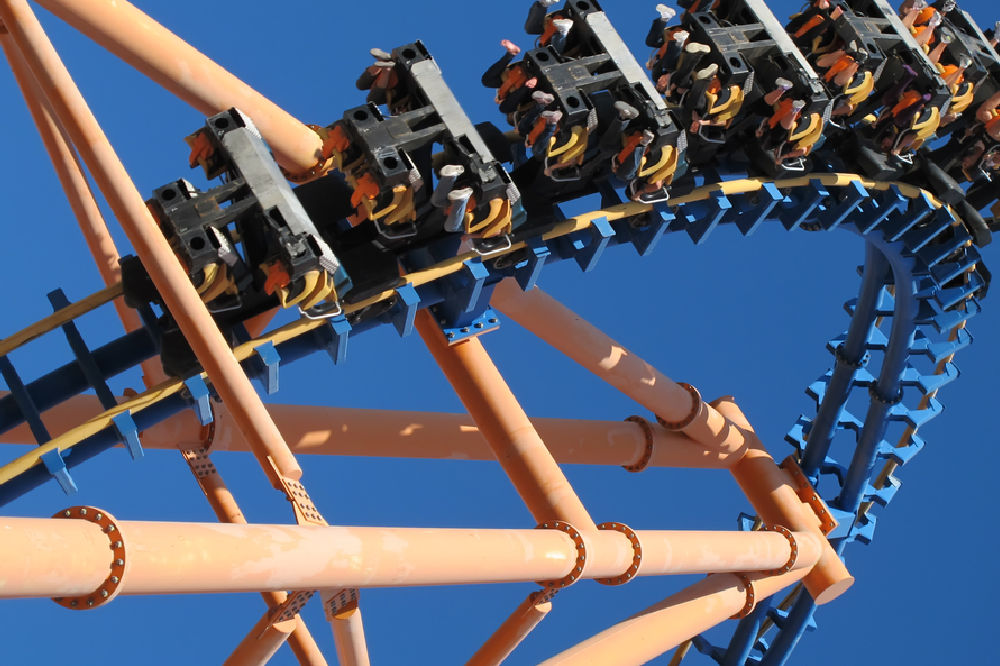Though the cold season has just begun, it will be sunny and warm again before we know it. Amusement parks are popular attractions in the warmer months. There are even some indoor parks and recreation facilities that are open through the winter. While these are fun and exciting places to spend our time, they do come with risks.
Every year, thousands of people are injured in amusement park accidents. Even if nothing goes wrong, simply riding a ride can lead to injuries such as whiplash, bruising, and muscle strain. However, when a more serious incident occurs, such as a mechanical failure, the injuries can be devastating and even deadly.
Unfortunately, pursuing compensation following an amusement park accident can be tricky. Most parks have insurance policies in place to protect them as well as their own legal teams in case someone files a claim or a lawsuit against them. In some cases, injured victims may even have signed a waiver before entering the park or facility, which can make it even more difficult to take legal action.
However, though difficult, it is not impossible to go after an amusement park for compensation if their negligent actions lead to your injury. Working with a personal injury attorney is your best option as they can help you gather evidence to prove fault and win your case.
Common Causes of Amusement Park Accidents
While large amusement parks with roller coasters tend to be responsible for most amusement park accidents, injuries can occur at other types of parks and facilities, such as fairgrounds, zip line parks, climbing facilities, trampoline parks, and more.
Accidents and injuries at these parks and facilities can occur for any number of reasons. However, according to the Consumer Product Safety Commission, most amusement park accidents occur due to the following:
- Passenger behaviors: Riders who act irresponsibly or disobey instructions while riding a ride can be liable for their own actions if an injury occurs. This includes things like removing or tampering with safety restraints, rocking cars, and standing up while the ride is still in motion.
- Operator negligence: Ride operators and other staff responsible for the safety of park guests can also be accountable if their negligent actions lead to an injury. This includes failing to check or secure a safety restraint, abruptly stopping a ride, and failing to check the height of someone that is too short to ride.
- Mechanical failures: Mechanical failures can also occur and lead to an accident. This includes brake failures, safety restraint malfunctions, or an issue with a structural component.
- Inherent ride dangers: Even if nothing goes wrong, the inherent risk of a ride can cause someone to become injured. For example, sudden drops, turns, and flips can cause whiplash, loss of consciousness, bruising, and other minor injuries.
Injuries That Can Happen at An Amusement Park
Injuries at amusement parks can vary depending on how the accident occurred and who was injured. For example, younger children and older adults that have weaker bodies are more susceptible to injury.
Common amusement park injuries include:
- Whiplash and other neck injuries
- Head injuries, such as concussions and brain trauma
- Back injuries
- Muscle sprains and strains
- Fractured bones
- Cuts, scrapes, and bruises
- Loss of limbs and amputation
- Spinal cord injuries
- Paralysis
Liability in Amusement Park Accidents
When an accident or injury occurs, the park can be held liable if it is due to owner and operator negligence. However, if a mechanical malfunction or faulty part is to blame, the ride manufacturer could be held responsible through a product liability claim. If the accident occurs due to rider behavior and reckless actions, it can be more difficult to receive compensation.
In a negligence claim, to hold the amusement park liable, you must prove that:
- The park owner and operators owed the rider reasonable duty of care
- The owner or operator breached that duty
- The breach was a direct cause of the accident and rider injuries
Examples of this can include failing to properly secure a rider, failing to keep up with ride maintenance, failing to post proper warnings and precautions, failing to properly train staff, or failing to respond to an emergency.
In some situations, a ride defect or failure can be the cause of an accident. When this occurs, the injured party can file a product liability claim against the ride manufacturer. With this type of claim, the injured victim must be able to prove that a structure, part, or piece of equipment was defective and that the accident and their injuries occurred as a direct result.
In either of these cases, negligence or product liability, proving fault can be difficult. Most amusement parks have teams and policies in place to protect them in case this happens, and they may fight to deny your claim. It’s crucial in these situations to work with an attorney. They can help walk you through the process and guide you in the right direction. This includes gathering information and evidence to support your claim.
Consult an Indianapolis Personal Injury Lawyer
If you or a loved one were injured in an amusement park accident, you have a right to seek compensation for the injuries you sustained. Even if you signed a waiver, you might still be entitled to compensation. However, proving fault in these types of cases can sometimes be a challenge. An experienced attorney can help you file your claim and gather any necessary evidence to help you win your case.
At Crossen Law Firm, our team has over 20 years of experience fighting for victims injured in accidents, including amusement park incidents. We are dedicated to working tirelessly to get you the compensation that you deserve. Contact us today or give us a call for a free consultation at (317) 401-8626.

 317-401-8626
317-401-8626 
.jpg)